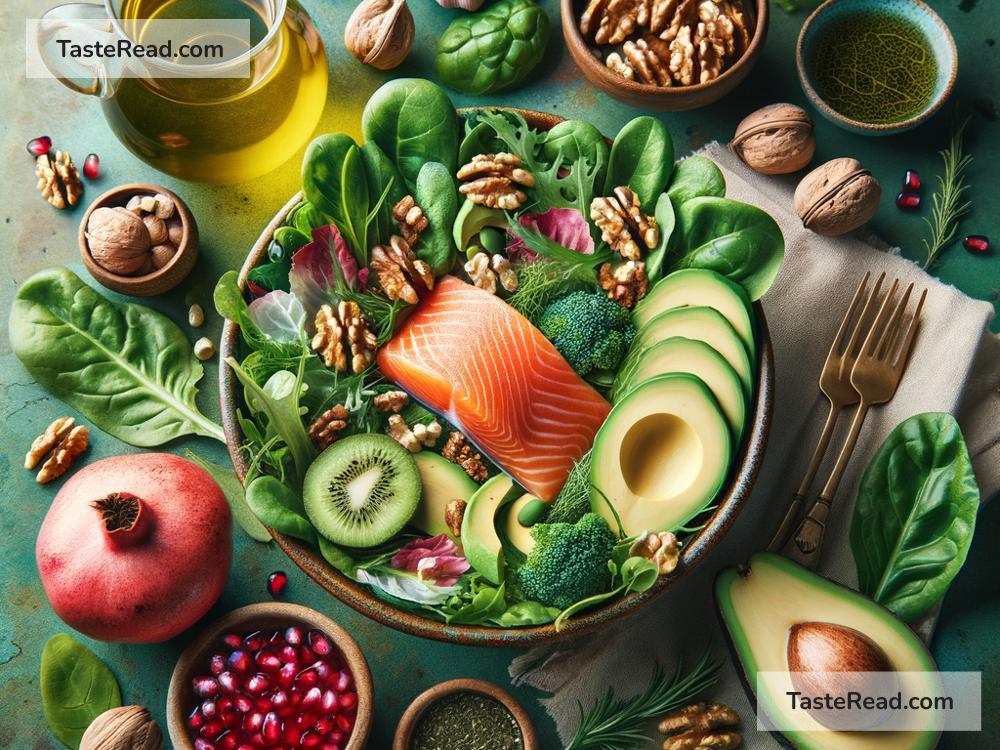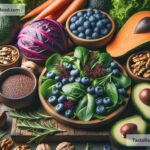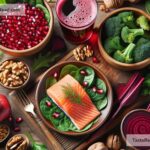Foods That Reduce Risk of Endothelial Dysfunction
Your body’s blood vessels are like highways, transporting nutrients, oxygen, and waste to and from your tissues and organs. For this system to work well, the lining of your blood vessels—called the endothelium—needs to stay healthy. Endothelial dysfunction occurs when the endothelium doesn’t work the way it should. This can lead to problems such as high blood pressure, clogged arteries, and even heart disease. Fortunately, you can lower your risk of developing endothelial dysfunction by eating certain foods that support blood vessel health.
In this blog, we’ll explore the best foods that can keep your endothelium strong and functioning properly.
What Is Endothelial Dysfunction?
Endothelial dysfunction happens when the inner lining of blood vessels doesn’t produce enough nitric oxide, a molecule that helps your blood vessels relax and stay flexible. Without enough nitric oxide, the blood vessels can become stiff or inflamed. This increases the risk of conditions such as atherosclerosis (plaque buildup in arteries), high blood pressure, and even strokes or heart attacks.
The good news is that certain foods contain nutrients and antioxidants that promote endothelial health. Let’s dive into these wonderful foods.
1. Leafy Greens: Spinach, Kale, and More
Leafy greens like spinach, kale, and Swiss chard are packed with nitrates—natural compounds that your body uses to make nitric oxide. Nitric oxide relaxes and widens blood vessels, allowing better blood flow and reducing pressure on your heart. Eating a variety of leafy greens regularly helps improve vascular health.
Try incorporating leafy greens into salads, soups, or smoothies. Even a handful of spinach with your morning scrambled eggs can make a difference!
2. Dark Chocolate (Yes, Chocolate!)
Good news for chocolate lovers: dark chocolate can support endothelial function. But, before you reach for a candy bar, keep in mind that the benefit comes from dark chocolate that contains at least 70% cocoa.
Cocoa is rich in flavonoids, natural antioxidants that help improve nitric oxide production and reduce inflammation in blood vessels. Flavonoids also combat oxidative stress—a type of damage that can harm the endothelium.
Enjoy dark chocolate sparingly as an occasional snack or dessert. Remember, moderation is the key—dark chocolate is healthy, but it’s still high in calories.
3. Fatty Fish: Salmon, Mackerel, and Tuna
Fatty fish like salmon, mackerel, and tuna are rich in omega-3 fatty acids. Omega-3s have anti-inflammatory properties that protect your endothelium from damage caused by inflammation or cholesterol buildup.
Studies have shown that eating fatty fish regularly can improve arterial flexibility and even lower your risk of heart disease. If you’re not a fan of fish, you can consider taking fish oil supplements, but it’s always better to get nutrients directly from food.
Aim to eat fatty fish at least twice a week. Grill or bake it for a delicious, heart-friendly meal.
4. Berries: Blueberries, Strawberries, and Raspberries
Berries are small but mighty when it comes to vascular health. They’re rich in antioxidants and polyphenols, which protect your endothelium from oxidative stress and inflammation. In addition, berries help increase nitric oxide levels and improve blood vessel function.
Blueberries, strawberries, raspberries, and blackberries are all great options to include in your diet. You can enjoy them as snacks, add them to yogurt, or blend them into smoothies for an easy nutrient boost.
5. Nuts and Seeds
Nuts and seeds like almonds, walnuts, and flaxseeds are packed with healthy fats, fiber, and nutrients such as vitamin E and magnesium. These nutrients help reduce inflammation and oxidative stress, keeping your endothelium in good shape.
Walnuts, in particular, are rich in omega-3 fatty acids, making them a heart-healthy choice. Snack on a small handful of nuts or sprinkle seeds over your meals for long-lasting benefits.
6. Green Tea
Green tea has been used for centuries as a health tonic, and for good reason. It contains catechins, which are powerful antioxidants that protect your blood vessels from damage. Studies have shown that drinking green tea can help improve arterial function and boost nitric oxide levels.
Replace sugary drinks with green tea or enjoy a cup after meals to take advantage of its vascular benefits.
7. Whole Grains
Whole grains like oats, quinoa, and brown rice are higher in fiber and nutrients compared to refined grains. Fiber helps lower cholesterol levels and reduces inflammation, both of which contribute to endothelial health.
Swap out refined grains like white bread and pasta for whole-grain versions whenever possible. Eating more fiber-rich foods can improve your overall cardiovascular health over time.
8. Garlic
Garlic doesn’t just add flavor to your meals! It also supports blood vessel health by boosting nitric oxide production and relaxing blood vessels. Garlic contains allicin, a compound with powerful health and anti-inflammatory benefits.
Add fresh garlic to your cooking or take garlic supplements, but consult your doctor if you’re considering concentrated garlic pills.
Putting It All Together
Endothelial dysfunction is a warning sign of potential heart or vascular problems. By eating foods that support your blood vessels, you can take control of your health and reduce your risk. From leafy greens and berries to fatty fish and green tea, these nutritious choices can make a big difference in how your body functions.
Remember, a healthy diet is just one piece of the puzzle. Regular exercise, stress management, and avoiding smoking are also important steps toward better cardiovascular health. Small changes every day can add up to a healthier, happier you!
Start with one of these foods today and take the first step toward long-lasting vascular health. Your blood vessels will thank you!


